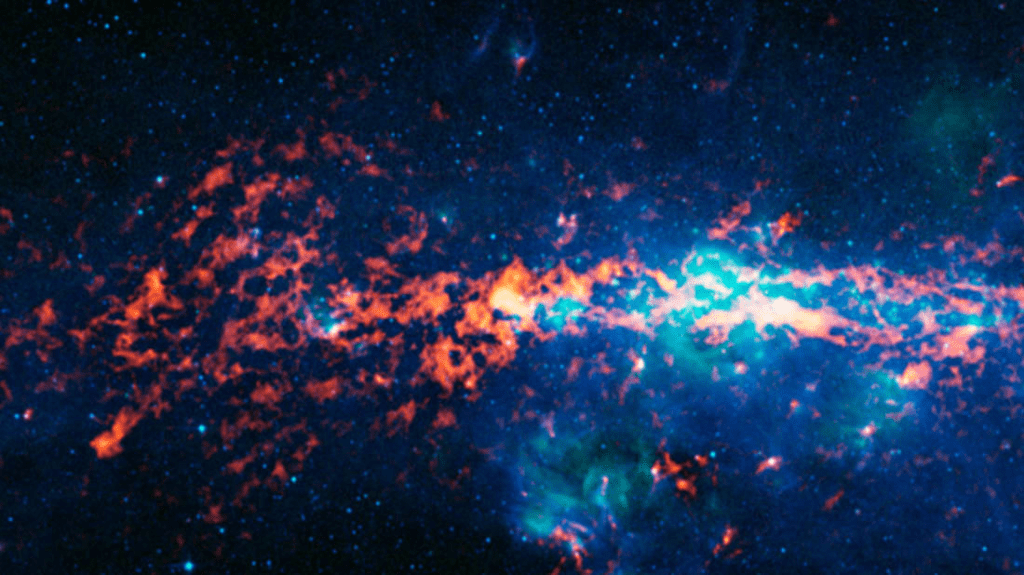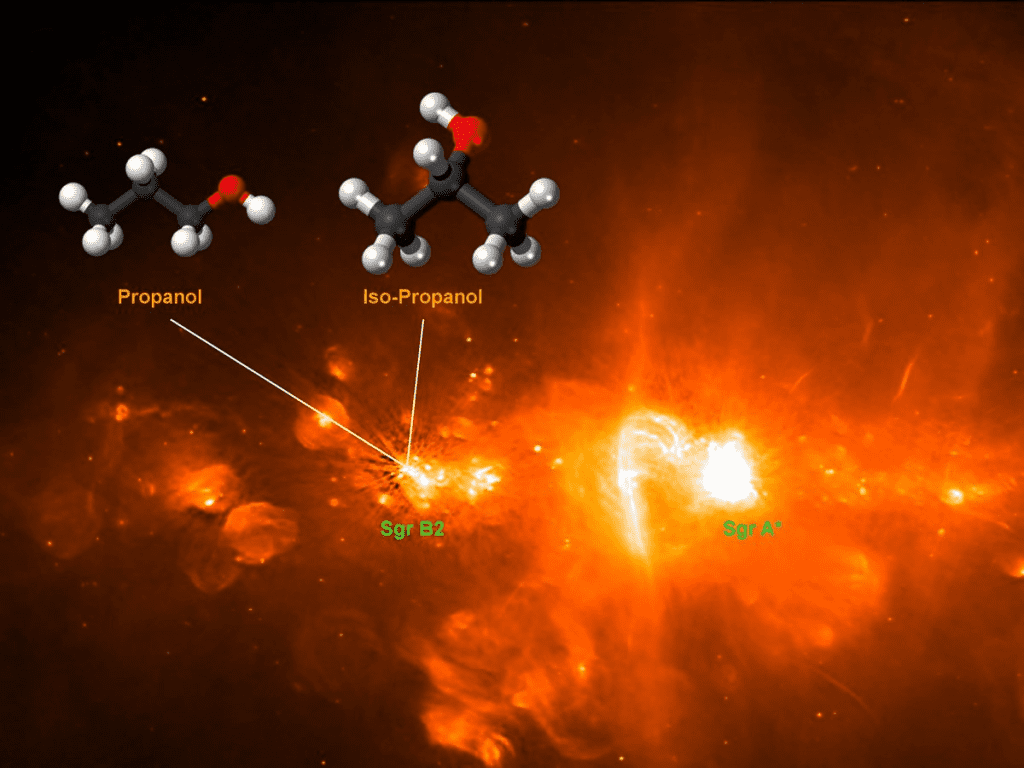A team of astronomers from Jodrell Bank Observatory has discovered a massive cloud of methyl alcohol extending approximately 288 billion miles, surrounding a stellar nursery. This gas cloud could provide valuable insights into how the most massive stars in our galaxy are formed.

The new observations were made using the UK’s upgraded MERLIN radio telescopes. The team focused on the W3(OH) region, a star-forming area in our galaxy where stars are born from the gravitational collapse of a cloud of gas and dust. Their findings revealed giant filaments of gas emitting “masers” (molecules in the gas amplifying and emitting microwave radiation, similar to how lasers emit beams of light).
These gas filaments form enormous bridges between maser “spots” previously observed in W3(OH). The largest of these maser filaments spans 288 billion miles (463 billion km). The observations suggest that the entire gas cloud is rotating like a disc around a central star, similar to how planetary accretion discs form around young stars. The maser filaments occur at shock boundaries, where large gas regions collide.

“Our discovery is very exciting because it challenges long-held ideas in astronomical maser research. Before we found these filaments, masers were thought to be point-like or small, bright hotspots surrounded by fainter emissions,” said Dr. Lisa Harvey-Smith, the Principal Investigator for the study, who presented the findings at the Royal Astronomical Society’s National Astronomy Meeting on April 4.
Thanks to the recent upgrade of the UK’s MERLIN telescope network, astronomers can now observe methanol masers with much greater sensitivity, allowing them to capture a complete picture of the radiation surrounding maser sources. In this study, the team analyzed the 3D motion of the W3(OH) star-forming region and measured the physical properties of the gas, such as temperature, pressure, and the strength and direction of magnetic fields. This information is crucial for testing theories on how stars are born from primordial gas in stellar nurseries.
Dr. Harvey-Smith commented, “There are still many unanswered questions about the birth of massive stars because the formation regions are hidden by dust. The only radiation that can escape is at radio wavelengths, and the upgraded MERLIN network now gives us the first chance to look deep into these star-forming regions and understand what’s really happening.”

The complex interactions between molecules in star-forming regions produce emissions across various wavelengths. Future observations of masers at different frequencies are planned to complete the intricate puzzle that has just begun to unfold.
Dr. Harvey-Smith concluded, “Although it’s thrilling to discover a cloud of alcohol almost 300 billion miles across, unfortunately, methanol, unlike its cousin ethanol, is not suitable for human consumption!”


